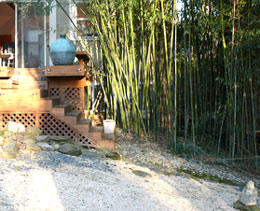
Italian art critic Franco Solmi:
"The artist Gini Alter was born in the United States where she received her first formal training and completed her studies which were subsequently perfected in Lebanon, Paris and Saudi Arabia, where she now lives and works. At first glance her works reveal her origins: "action painting" a lesson from Pollock, a touch of kindness in which the ancient anger dissolves. This is the major component of an art based on values of chromatic sensibility founded on the most rigorous adherence to tonal relationships.

In so far as her painting style is estranged from the desperation, from the over-dramatization, from the anguished cry of the masters of informal American School, the artist tells us so herself. In her brief testimony, she states that "these paintings are about love, joy, harmony and balance", portraying a reality that is wholly spiritual. This is verifiable in the light of the inner glow, the intense luminosity albeit restrained, that sparks this medium in these works of great serenity. This is probably due to conscious reaction on the part of the artist to the imbalance and inharmony of the world in which she lives and has lived. From America, to Europe, to the discordant Middle East, Gini Alter has surely had experiences which were disconcerting. Therefore, if she intends to construct through art a world in which "God‘s white light" shines without cruelty, it is evidently a choice determined by a will that proceeds from abstractions of reality – abstractions having a tendency towards a metaphysical transformation of the sentiments. Thus, Gini Alter images present themselves as a sort of search for essential truth that is above and beyond existential tumults. These tumults are not negated, but rather sublimated, by the superior and "spiritual" order of her art.
Gini Alter responds to the imbalance, to the inharmony, to the infelicity of our times with the ancient dream of the artist that can imagine liberty where there is slavery, harmony where there is complete disorder, and serenity where there is total desperation. Art, in this case, is the expression of a desire for a necessary and unrenounceable utopia of man more than of reality. In this way, the luminous canvases of Gini Alter have their very own, extremely beautiful, aesthetic truth and express, perhaps better than any work of open declaration, the uneasiness of the young generation of Americans and Europeans. Beauty, joy and harmony, just as love and balance, are not of this reality. But, in the dream of the visionary, they can become truths capable of fascinating those who behold them in the manner in the artist expresses them."